
Jedi, Jedi Knights, or collectively the Jedi Order are fictional characters, and often protagonists, featured in many works within the Star Wars franchise. Working symbiotically alongside the Old Galactic Republic, the Jedi Order is depicted as a religious, academic, meritocratic, and military-auxiliary (peacekeeping) organization whose origin dates back thousands of years before the events of the first film released in the franchise. The fictional organization has inspired a real-world new religious movement and parody religion: Jediism.
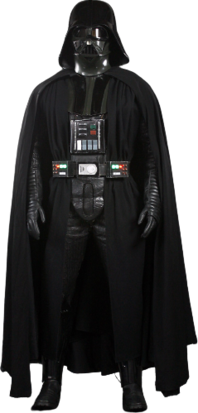
Darth Vader is a fictional character in the Star Wars franchise. He was first introduced in the original film trilogy as one of the leaders of the Galactic Empire. The prequel trilogy chronicles his transformation from the Jedi Knight Anakin Skywalker into the Sith Lord Darth Vader. His metamorphosis begins when he is lured to the dark side of the Force by Chancellor Palpatine, who later becomes the Emperor. After a lightsaber battle with his former mentor Obi-Wan Kenobi, Vader is severely injured and is transformed into a cyborg. He serves Palpatine for over two decades, hunting down the remaining Jedi and attempting to crush the Rebel Alliance. When Palpatine tries to kill Vader's son, Luke Skywalker, the Sith Lord turns against his master and destroys him. Vader is the husband of Padmé Amidala, the father of Luke and his twin sister Leia Organa, and the grandfather of Ben Solo.
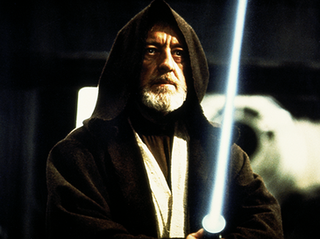
Obi-Wan "Ben" Kenobi is a character in the Star Wars franchise. In the original film trilogy, he is a Jedi Master who trains Luke Skywalker in the ways of the Force. In the prequel trilogy, he mentors Luke's father, Anakin Skywalker. Obi-Wan is portrayed by Alec Guinness in the original trilogy and by Ewan McGregor in the prequel films. McGregor also plays the character in the television series Obi-Wan Kenobi. Guinness's performance in Star Wars (1977) earned him the Saturn Award for Best Supporting Actor, as well as a nomination for the Academy Award for Best Supporting Actor.

Count Dooku, also known as Darth Tyranus, is a fictional character in the Star Wars franchise. He was introduced in the prequel film trilogy, first appearing in Attack of the Clones (2002) and then returning in Revenge of the Sith (2005). He is portrayed by Christopher Lee in both films, and is voiced by Corey Burton in most of the video games and animated productions in which he appears. The animated productions include the series Clone Wars (2003–2005), The Clone Wars, and Tales of the Jedi (2022). Lee voices Dooku in the 2008 animated film The Clone Wars. Dooku also appears in novels and comics.

Yoda is a fictional character in the Star Wars franchise. He is a small, green humanoid alien who is powerful with the Force. He first appeared in the 1980 film The Empire Strikes Back, in which he is voiced and puppeteered by Frank Oz, who reprised the role in Return of the Jedi (1983), the prequel trilogy, the sequel trilogy, and the animated series Star Wars Rebels. Other actors who voice Yoda are Tom Kane, Piotr Michael, John Lithgow, Tony Pope and Peter McConnell. In addition to films and television series, Yoda appears in comics, novels, video games and commercials.

The Clone Wars, also known as the Separatist Crisis, is a fictional conflict in the Star Wars franchise by George Lucas. Though mentioned briefly in the first Star Wars film, the war itself was not depicted until Attack of the Clones (2002) and Revenge of the Sith (2005). The Clone Wars are also the setting for three eponymous projects: a 2D animated series (2003–2005), a 3D film (2008), and a 3D animated series. They have featured in numerous Star Wars books, comics and games.
"The Imperial March (Darth Vader's Theme)" is a musical theme present in the Star Wars franchise. It was composed by John Williams for the film The Empire Strikes Back. Together with "Yoda's Theme", "The Imperial March" was premiered on April 29, 1980, three weeks before the opening of the film, on the occasion of John Williams' first concert as official conductor-in-residence of the Boston Pops Orchestra. One of the best known symphonic movie themes, it is used as a leitmotif throughout the Star Wars franchise.

General Grievous is a character in the Star Wars franchise created by George Lucas. He was introduced in the 2003 animated series Star Wars: Clone Wars, before appearing through computer-generated imagery in the 2005 live-action film Star Wars: Episode III – Revenge of the Sith. Wood reprised the role in the 2008 animated series Star Wars: The Clone Wars and the 2024 anthology series Tales of the Empire.
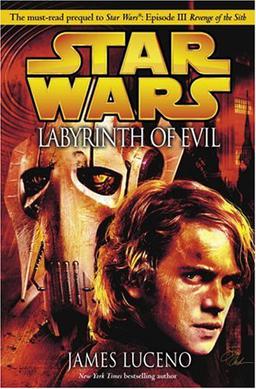
Star Wars: Labyrinth of Evil is a 2005 novel by James Luceno set in the fictional Star Wars universe. The novel serves as a lead-in to Star Wars: Episode III – Revenge of the Sith, and was loosely adapted into Volume Two of the Star Wars: Clone Wars microseries.

Star Wars: Episode III – Revenge of the Sith is an action video game based on the movie of the same name. It was released on May 5, 2005, for the PlayStation 2, Xbox, Game Boy Advance, Nintendo DS, and Symbian OS. For the Xbox 360's backwards compatible lineup, Revenge of the Sith is one out of the 400+ backwards compatible games for the 360. As part of the PlayStation 2 classics program, the PlayStation 2 version was re-released in Europe on the PlayStation Network on February 11, 2015, and in North America on April 28, 2015. Meanwhile, the Xbox version was also added to the backwards compatibility list for the Xbox One and Xbox Series X/S on November 15, 2021.
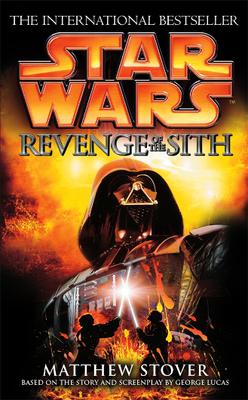
Star Wars: Revenge of the Sith is a novelization of the film of the same name, written by Matthew Stover and published on April 2, 2005, by Del Rey Books.
The Jedi series of comics was written by John Ostrander and Jeremy Barlow, and was published by Dark Horse Comics from 20 August 2003 to 21 July 2004 as a series of one-shots chronicling the actions of five Jedi during the Clone Wars.

The Sith are the main antagonists in the fictional universe of the Star Wars franchise. They are the antithesis and ancient enemies of the Jedi. The Sith Order is depicted as an ancient cult of warriors who draw strength from the dark side of the Force and use it to seize power by any means necessary, including terrorism and mass murder; their ultimate goals are to destroy the Jedi and rule the galaxy.

Star Wars: The Clone Wars is a 2008 American animated space opera film directed by Dave Filoni, produced by Lucasfilm Ltd. and Lucasfilm Animation, and distributed by Warner Bros. Pictures, becoming the first Star Wars film to not be distributed by 20th Century Fox. It is the first fully animated film in the Star Wars franchise and takes place shortly after Episode II – Attack of the Clones (2002), at the start of the titular Clone Wars. In the film, Count Dooku and Jabba the Hutt's uncle Ziro orchestrate a plan to turn Jabba against the Galactic Republic by framing the Jedi for the kidnapping of his son. While Anakin Skywalker and his newly assigned apprentice Ahsoka Tano attempt to deliver the child back to his father, Obi-Wan Kenobi and Padmé Amidala lead separate investigations to uncover Dooku and Ziro's plot.

Sheev Palpatine is a fictional character in the Star Wars franchise. He first appeared in the 1980 film The Empire Strikes Back as The Emperor. He is also known by his Sith name, Darth Sidious, which was first used in the novelization of the 1999 film The Phantom Menace.
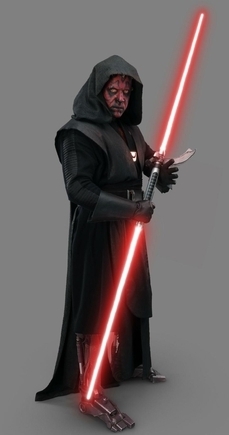
Darth Maul is a character in the Star Wars franchise created by George Lucas. He first appeared in the prequel film Star Wars: Episode I – The Phantom Menace (1999). Maul returned in the animated television series Star Wars: The Clone Wars and Star Wars Rebels (2014–2018), as well as the standalone film Solo: A Star Wars Story (2018). Lucas had intended for Maul to feature in the sequel film trilogy, but these plans were discarded when Disney acquired Lucasfilm in 2012.

Clone troopers are fictional characters from the Star Wars franchise created by George Lucas. First introduced in the live-action film Star Wars: Episode II – Attack of the Clones (2002), they have since appeared in various other Star Wars media, including Star Wars: Episode III – Revenge of the Sith (2005) and the animated series Star Wars: The Clone Wars, Star Wars Rebels (2014–2018), Star Wars: The Bad Batch (2021–2024), and Tales of the Jedi (2022–present) as well as comics, novels, and video games set in both the Star Wars Legends expanded universe and the current canon.
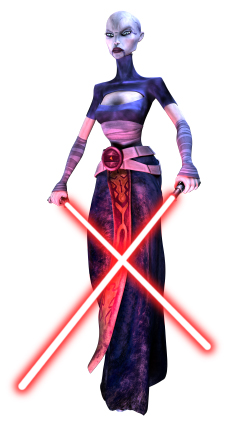
Asajj Ventress is a character in the Star Wars franchise created by George Lucas. She was introduced in Genndy Tartakovsky's 2003 animated series Star Wars: Clone Wars. The character later appeared in the 2008 animated film Star Wars: The Clone Wars, the 2008 television series of the same name, and the 2021 Disney+ series Star Wars: The Bad Batch.

Mace Windu is a fictional character in the Star Wars franchise. He was introduced in the prequel trilogy as a Jedi Master who sits on the Jedi High Council during the final years of the Galactic Republic. He is portrayed by Samuel L. Jackson in all three prequel films. Windu also appears in the 2008 animated film The Clone Wars, the television series of the same name, and in novels, comics, and video games.
















